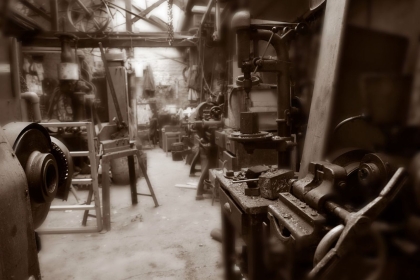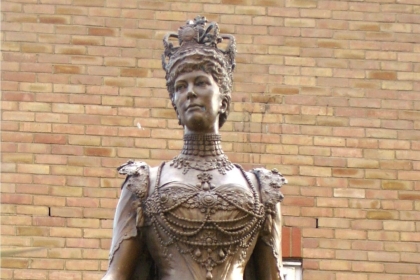Situated on the outskirts of Chester city centre, Hoole offers a very neighbourly atmosphere, where rows of pretty terraces and semi-detached homes house local families, so content with the lifestyle, they never have felt the need to leave.
However, with a vibrant high street, Hoole isn’t too quiet. Local Faulkner Street is the central hub for all things lifestyle, filled with independent bars and restaurants, cool barber shops and boutique clothing stores. It’s quirky and unique atmosphere is more akin to a swanky London postcode than a residential suburb on the outskirts of an ancient city.
With just a ten-minute drive to the city centre, local residents can enjoy a brief commute to the city centre, perfect for city professionals and social butterflies. Although living the best of both worlds, they will always return to a quiet place of suburbia that has a playful twist.
With just a ten-minute drive to the city centre, local residents can enjoy a brief commute to the city centre, perfect for city professionals and social butterflies. Although living the best of both worlds, they will always return to a quiet place of suburbia that has a playful twist.
Five Quick Facts
.jpg&w=420&h=280&wl=&hl=&wp=&hp=&zc=1) 1
The name ‘Hoole’ is thought to be derived from nearby Newton Hollows, a sunken ancient road thought to originate from Roman times. With the name ‘Hoole’ coming from ‘Hollow’ or ‘Hole’, representing the sunken pathway.
1
The name ‘Hoole’ is thought to be derived from nearby Newton Hollows, a sunken ancient road thought to originate from Roman times. With the name ‘Hoole’ coming from ‘Hollow’ or ‘Hole’, representing the sunken pathway.
 2
The Sticky Walnut restaurant on Charles Street was voted the UK’s Restaurant of the Year in 2014 by the AA Hospitality Awards.
2
The Sticky Walnut restaurant on Charles Street was voted the UK’s Restaurant of the Year in 2014 by the AA Hospitality Awards.
.jpg&w=420&h=280&wl=&hl=&wp=&hp=&zc=1) 3
During medieval times, Hoole was known as the ‘Valley of Demons’. This is thought to be in connection with Newton Hollows, perhaps the thieves and burglars lying in wait on the sides of the pathway for unassuming passers-by.
3
During medieval times, Hoole was known as the ‘Valley of Demons’. This is thought to be in connection with Newton Hollows, perhaps the thieves and burglars lying in wait on the sides of the pathway for unassuming passers-by.
 4
There was once a workhouse in Hoole. The Chester Union Workhouse was home to around 450 people, including men, women and children. Its original gate posts can be seen today near the entrance of Housesteads Drive.
4
There was once a workhouse in Hoole. The Chester Union Workhouse was home to around 450 people, including men, women and children. Its original gate posts can be seen today near the entrance of Housesteads Drive.
 5
The popular Alexandra Park in Hoole was originally called Hoole Park. It was renamed after Queen Alexandra, who was married to King Edward 7th. The Queen was noted to hope that the park proved “a source of health and happiness to all the residents and children”.
5
The popular Alexandra Park in Hoole was originally called Hoole Park. It was renamed after Queen Alexandra, who was married to King Edward 7th. The Queen was noted to hope that the park proved “a source of health and happiness to all the residents and children”.
Lifestyle & Activities
As a predominantly residential area, the lifestyle in Hoole is relatively laid-back with many of the residents taking the short commute into the city centre to socialise and shop.
However, one of Hoole’s most attractive traits is its neighbourhood feel, a place that is quite happy not to have succumbed to the commercialisation of the city centre. Although, it must be said, that the historic buildings of the city centre make it feel a much more independent than the stores housed inside. The lengthy Faulkner Street is thriving with small, independent businesses that are very much community orientated.
Faulkner Street is where you can find many locals dining in the local eateries, enjoying a fresh cut from the barbers and doing a spot of grocery shopping. Residents are proud to support local businesses and more importantly, are happy to take the time to shop around the stores, opting to disregard the convenience of the giant supermarkets. It is with this mentality that makes Hoole an attractive place, where the modern businesses merge with the old-school style of shoppers.
For those who enjoy the great outdoors, Hoole is home to the popular Alexandra Park, which was opened in 1911. The park’s original intent was to provide a place of health in the poor area of Hoole and although Hoole may be considered to be much wealthier than it once was, the park still remains a key part of leisure in the built-up area.
As well as the beautiful green spaces of the park, visitors can also take advantage of the tennis courts, children’s play area and the bowling green. Owned by the Crown Green Bowling Club, the facility is a popular place to visit for the older members of the community, a great place to encourage socialising and friendship.
However, one of Hoole’s most attractive traits is its neighbourhood feel, a place that is quite happy not to have succumbed to the commercialisation of the city centre. Although, it must be said, that the historic buildings of the city centre make it feel a much more independent than the stores housed inside. The lengthy Faulkner Street is thriving with small, independent businesses that are very much community orientated.
Faulkner Street is where you can find many locals dining in the local eateries, enjoying a fresh cut from the barbers and doing a spot of grocery shopping. Residents are proud to support local businesses and more importantly, are happy to take the time to shop around the stores, opting to disregard the convenience of the giant supermarkets. It is with this mentality that makes Hoole an attractive place, where the modern businesses merge with the old-school style of shoppers.
For those who enjoy the great outdoors, Hoole is home to the popular Alexandra Park, which was opened in 1911. The park’s original intent was to provide a place of health in the poor area of Hoole and although Hoole may be considered to be much wealthier than it once was, the park still remains a key part of leisure in the built-up area.
As well as the beautiful green spaces of the park, visitors can also take advantage of the tennis courts, children’s play area and the bowling green. Owned by the Crown Green Bowling Club, the facility is a popular place to visit for the older members of the community, a great place to encourage socialising and friendship.
Schools
When it comes to educating little ones, Hoole has some fantastic options, close to home and close enough to the city centre, helping both Mum and Dad commute to work easily after the school run.
For younger children of primary school age, there are two main schools which prove popular with parents looking to encourage religious education throughout their child’s schooling.
The Hoole Church of England Primary School offers education to children from the ages of four to eleven, holding Christian values at the heart of all of its teachings. The school uses the National Curriculum Programmes of Study and so parents can expect their child to study core subjects such as English, Mathematics and Computing as well as a creative curriculum. Part of this is Social, Moral, Spiritual and Cultural Education, helping children to understand their religion and culture, as well as the others around them. In its most recent Ofsted inspection, the school achieved a rating of ‘Good’.
For those who follow the Catholic faith, the Saint Werburgh's and Saint Columba's Catholic Primary School is extremely popular. This school too gained the rating of ‘Good’ in its most recent Ofsted report and was also rated as an ‘outstanding primary school’ by the Section 48 report from the Diocese of Shrewsbury, inspecting the education at Catholic schools. Saint Werburgh’s and Saint Columba’s Catholic Primary follows the National Curriculum.
The strong Christian values at the school are incorporated into everyday life, the curriculum and even extra-curricular activities. The Mini Vinnies club is inspired by St. Vincent de Paul, who dedicated his life to serving the poor. The club is for children who want to help those in need from fellow pupils in the school to an international level. Led by parents and teachers, the group are able to get out into the local community.
Rated as ‘Outstanding’ by Ofsted after its most recent inspection, there is little wonder why so many parents are keen on having their child educated at the impressive St. Martin’s Academy. Based in …, the academy provides extended school days and great extra-curricular activities to ensure that the children get the best out of the curriculum.
As an academy, St. Martin’s has more freedom in the content of its curriculum and instead, opts for teaching through the International Baccalaureate Primary Years Programme. Within this programme, there are key differences of the curriculum choices for state school as opposed to academies or independents. At St. Martin’s, children are introducing to modern foreign languages from reception, a whole three years earlier than those who attend a state school.
For those parents looking to educate their children privately, the Abbey Gate Prep School offers education for children from nursery school to junior school. As an independent school, Abbey Gate Prep is subject to inspections from the Independent Schools Inspectorate (ISI), in its most recent report, the school was found to have met all the standards as provided by the ISI.
Boasting smaller class sizes than the average state school primary, teachers have the ability to spend extra time with individual pupils, helping them on their personal needs and areas of development. To enrich the curriculum, students are encouraged to take up a sport or hobby as part of the extracurricular activities. The school works with specialist coaches to teach the children a range of sports including Gymnastics, Judo and Athletics.
For younger children of primary school age, there are two main schools which prove popular with parents looking to encourage religious education throughout their child’s schooling.
The Hoole Church of England Primary School offers education to children from the ages of four to eleven, holding Christian values at the heart of all of its teachings. The school uses the National Curriculum Programmes of Study and so parents can expect their child to study core subjects such as English, Mathematics and Computing as well as a creative curriculum. Part of this is Social, Moral, Spiritual and Cultural Education, helping children to understand their religion and culture, as well as the others around them. In its most recent Ofsted inspection, the school achieved a rating of ‘Good’.
For those who follow the Catholic faith, the Saint Werburgh's and Saint Columba's Catholic Primary School is extremely popular. This school too gained the rating of ‘Good’ in its most recent Ofsted report and was also rated as an ‘outstanding primary school’ by the Section 48 report from the Diocese of Shrewsbury, inspecting the education at Catholic schools. Saint Werburgh’s and Saint Columba’s Catholic Primary follows the National Curriculum.
The strong Christian values at the school are incorporated into everyday life, the curriculum and even extra-curricular activities. The Mini Vinnies club is inspired by St. Vincent de Paul, who dedicated his life to serving the poor. The club is for children who want to help those in need from fellow pupils in the school to an international level. Led by parents and teachers, the group are able to get out into the local community.
Rated as ‘Outstanding’ by Ofsted after its most recent inspection, there is little wonder why so many parents are keen on having their child educated at the impressive St. Martin’s Academy. Based in …, the academy provides extended school days and great extra-curricular activities to ensure that the children get the best out of the curriculum.
As an academy, St. Martin’s has more freedom in the content of its curriculum and instead, opts for teaching through the International Baccalaureate Primary Years Programme. Within this programme, there are key differences of the curriculum choices for state school as opposed to academies or independents. At St. Martin’s, children are introducing to modern foreign languages from reception, a whole three years earlier than those who attend a state school.
For those parents looking to educate their children privately, the Abbey Gate Prep School offers education for children from nursery school to junior school. As an independent school, Abbey Gate Prep is subject to inspections from the Independent Schools Inspectorate (ISI), in its most recent report, the school was found to have met all the standards as provided by the ISI.
Boasting smaller class sizes than the average state school primary, teachers have the ability to spend extra time with individual pupils, helping them on their personal needs and areas of development. To enrich the curriculum, students are encouraged to take up a sport or hobby as part of the extracurricular activities. The school works with specialist coaches to teach the children a range of sports including Gymnastics, Judo and Athletics.
